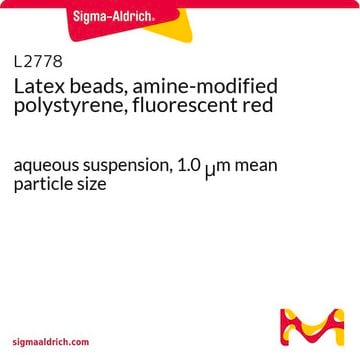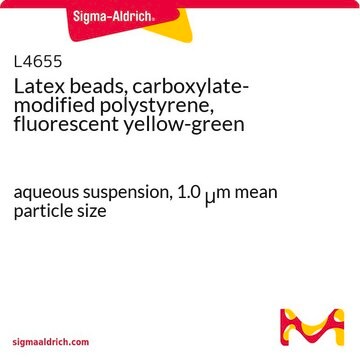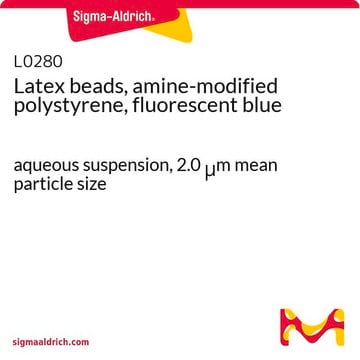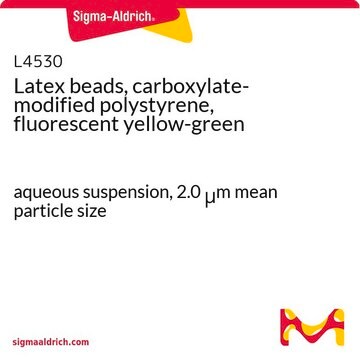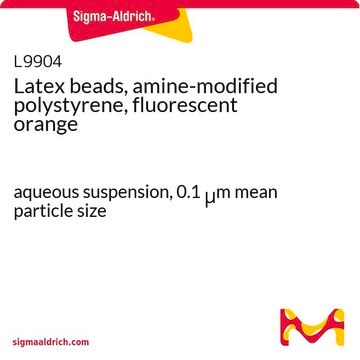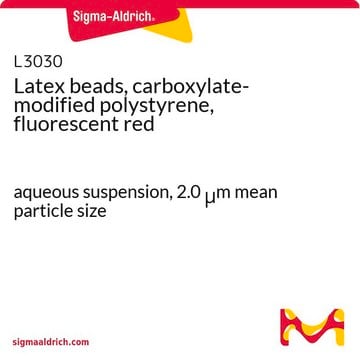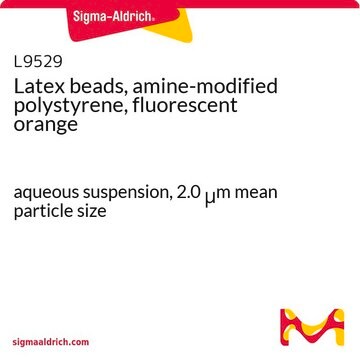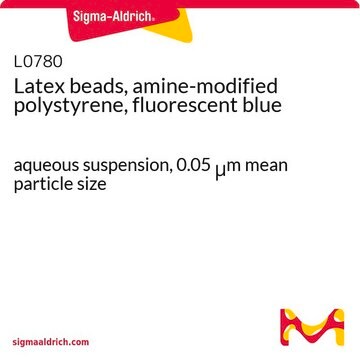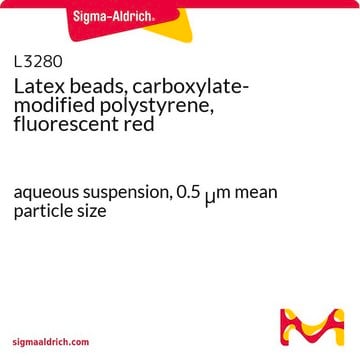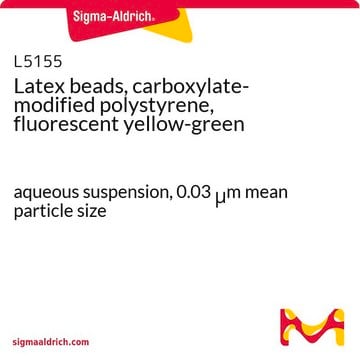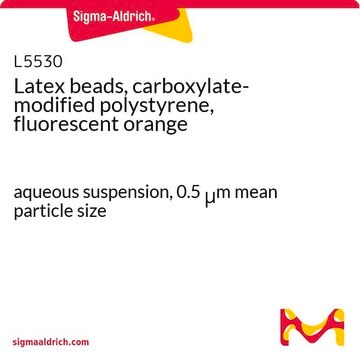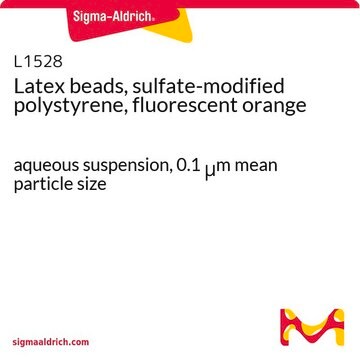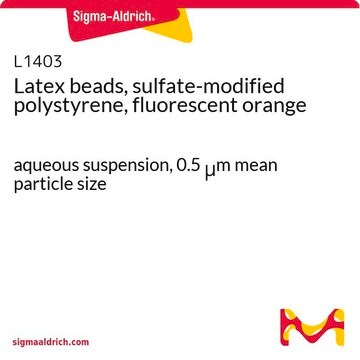The supplier does not provide the molecular weight or a molecular weight range for any of the latex beads. Polystyrene has a linear formula of [CH2CH(C6H5)]n. There are no exact values for the molecular weight available, although some internet sources may state a range of 100,000 to 400,000 amu. The polystyrene can be unmodified or surface modified. The dye is encapsulated inside the surface functionalized (amine or carboxylic) PS beads, which are well dispersed in the cationic surfactant assisted solution. The dye is not strongly bonded, and the PS may have a porous structure, so the dye can come out when changing to an organic solvent.
L1030
Latex beads, amine-modified polystyrene, fluorescent yellow-green
aqueous suspension, 1.0 μm mean particle size
Select a Size
₹9,883.23
In StockDetails
Select a Size
About This Item
₹9,883.23
In StockDetails
Recommended Products
form
aqueous suspension
Quality Level
composition
Solids, 2.5%
technique(s)
cell based assay: suitable
mean particle size
1.0 μm
fluorescence
λex ~470 nm; λem ~505 nm
application(s)
cell analysis
Looking for similar products? Visit Product Comparison Guide
Application
Biochem/physiol Actions
Storage Class Code
10 - Combustible liquids
WGK
WGK 2
Flash Point(F)
Not applicable
Flash Point(C)
Not applicable
Choose from one of the most recent versions:
Already Own This Product?
Find documentation for the products that you have recently purchased in the Document Library.
Customers Also Viewed
-
What is the linear chemical formula and molecular weight of the various latex beads with product codes L1528, L1403, L9902, L9529, L9904, L9654, L0780, L0280, L3030, L3280, L5530, L2778, L4655, L4530, L5155, and L1030?
1 answer-
Helpful?
-
-
Hi, can you please provide me some information about the density of amines loaded on the surface of this particles?
1 answer-
The amine content is not specifically quantified on a lot-to-lot basis. Historical data indicate a total parking area of 30 to 300 angstroms squared per charge group. Unfortunately, no further information is available.
Helpful?
-
Active Filters
Our team of scientists has experience in all areas of research including Life Science, Material Science, Chemical Synthesis, Chromatography, Analytical and many others.
Contact Technical Service